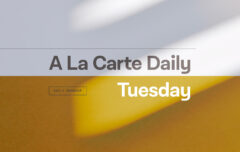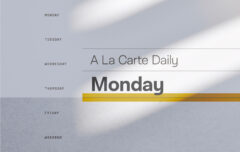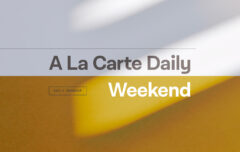I have a particular interest in books that seek to give us categories through which we can understand this strange new world that is being built around us through the internet. The sheer pervasiveness of the internet has allowed it to impact our lives so deeply and so profoundly and I’m not sure that many of us really understand this. One person seeking to bring sense to it is David Weinberger, a writer, teacher and marketing consultant. In Everything is Miscellaneous he offers a tour of the new digital disorder that is happening as we move from a physical to a digital world.
As we migrate to the digital world we are suddenly forced to ask how much of the way we learn is dictated not by human nature but by constraints placed upon us by the tyranny of the atom? Will the digitizing of the world’s information we may just find that the way we’ve done some things may be the result more of doing them through physical means. “The physical limitations that silently guide the organization of an office supply store also guide how we organize our businesses, our government, our schools. They have guided–and limited–how we organize knowledge itself. From management structures to encyclopedias, to the courses of study we put our children though, to the way we decide what’s worth believing, we have organized our ideas with principles designed for use in a world limited by the laws of physics.” For “as we invent new principles of organization that make sense in a world of knowledge freed from physical constraints, information doesn’t just want to be free. It wants to be miscellaneous.”
The way we process things that are introduced into our homes neatly summarize the way we handle most types of information: we go through them and then we put them away. We know that disorder leads to inefficiency, so that in order to live efficient lives we will need to bring order to what would otherwise be chaos. And so we sort things and put them in their proper places. We do this with the cutlery in our kitchen drawers and we do this with theology in the great systematic theology volumes on our shelves. Yet this system, seemingly ingrained into us, is not transitioning well to the digital world. Weinberger uses the example of the digital photos that inhabit our computers. Now that we all have digital cameras, many of us snap endless numbers of photos and archive them onto our computers. We end up with large lists of photos–hundreds, thousands or tens of thousands of them–with names like DSC00183.jpg. What we do with this is we label the photos and here we see the beauty of the digital world. If we were to print those photos and put them into an album that would then sit on the coffee table, each photo could only be in one place. We could have the photo in the section called “Vacation 2006” but not in the section called “Kids.” A physical object can be in only one place at a time. But in the digital world we can tag things as many ways as we want. A single photo does not need to be in one place but can be in as many places as we want it.
Weinberger describes three orders of order: in the first, we organize things themselves, putting spoons into drawers and photos into albums. Imagine a library in which all of the 10,000 books are arranged with no real semblance of order. Simply by collecting them we have entered into this order. In the second order of order, we create information about the objects (known as metadata, or information about information), perhaps listing them in an index or in a catalog. So now imagine a library with the books stamped with a Dewey number and a card catalog listing all of the books alphabetically by author. You are now in the second order or order. These first two orders arrange atoms and necessarily take up space. In the third order of order we digitize information, taking them from physical space into the digital world. By doing this we remove the limitations imposed by physics. So now we digitize the book, turning it into a file and storing it on a computer, and we digitize the card catalog so it is now searchable through a database. We’re now in the third order of order. Suddenly we can search so much better and so much deeper. We do not have available to us only eight or ten items of information and do not have to rely on an alphabetically-ordered catalog. Suddenly we can search an entire text by a near-infinite number of criteria.
Weinberger says “third-order practices undermine some of our most deeply ingrained ways of thinking about the world and our knowledge of it.” How? Well, consider medical information. Not too long ago, when we needed medical information, we went to our doctors for a diagnosis and then depended upon their advice for treatment. Today we do more: we head online and look for our symptoms. Even after being diagnosed by a doctor we may consult with others who have similar symptoms or look at forums and blogs dedicated to people suffering from the same affliction. In the second-order world we were dependent on experts so they could sift through the information and put it away for us. Today we can bypass this second order and head straight into the miscellaneous on our own. “It is changing how we think the world itself is organized and–perhaps more important–who we think has the authority to tell us so.”
And this is where the book intersected with my particular interest. What does it mean for the world and the church that the traditional patterns of authority have been eroded? If this book is all about what happens when we liberate knowledge from the tyranny of the atom, how are Christians, people of the Book, to react? What do we have to gain? What might we lose?
The author provides hints at ways to think about these things, though obviously specific answers are outside the scope of the book. Everything is Miscellaneous is really quite a good book and a good guide to how information is processed in our new, wired age. It’s far from the only attempt at understanding, but it’s definitely one of the most compelling. I recommend it.










